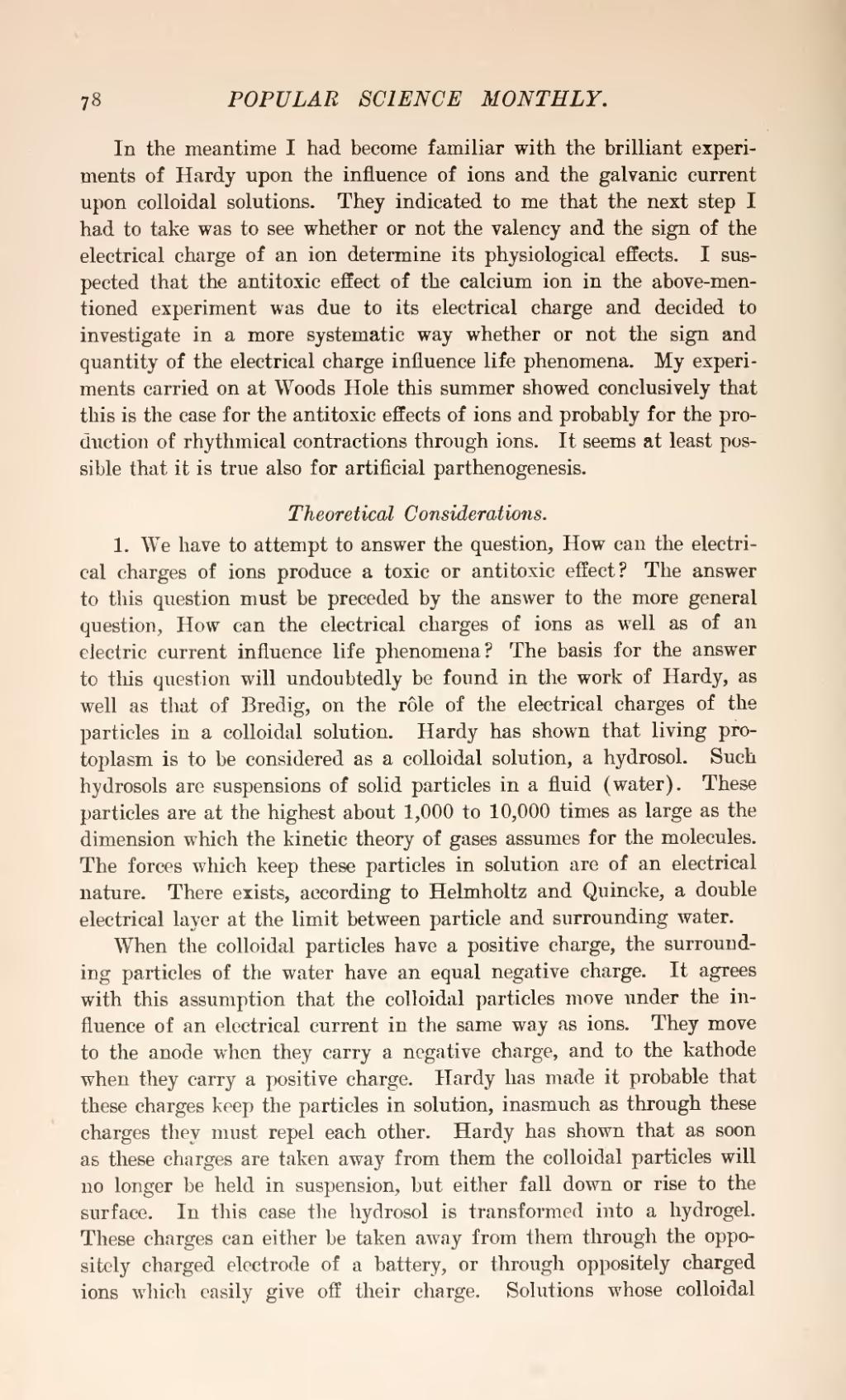In the meantime I had become familiar with the brilliant experiments of Hardy upon the influence of ions and the galvanic current upon colloidal solutions. They indicated to me that the next step I had to take was to see whether or not the valency and the sign of the electrical charge of an ion determine its physiological effects. I suspected that the antitoxic effect of the calcium ion in the above-mentioned experiment was due to its electrical charge and decided to investigate in a more systematic way whether or not the sign and quantity of the electrical charge influence life phenomena. My experiments carried on at Woods Hole this summer showed conclusively that this is the case for the antitoxic effects of ions and probably for the production of rhythmical contractions through ions. It seems at least possible that it is true also for artificial parthenogenesis.
Theoretical Considerations.
1. We have to attempt to answer the question, How can the electrical charges of ions produce a toxic or antitoxic effect? The answer to this question must be preceded by the answer to the more general question, How can the electrical charges of ions as well as of an electric current influence life phenomena? The basis for the answer to this question will undoubtedly be found in the work of Hardy, as well as that of Bredig, on the rôle of the electrical charges of the particles in a colloidal solution. Hardy has shown that living protoplasm is to be considered as a colloidal solution, a hydrosol. Such hydrosols are suspensions of solid particles in a fluid (water). These particles are at the highest about 1,000 to 10,000 times as large as the dimension which the kinetic theory of gases assumes for the molecules. The forces which keep these particles in solution are of an electrical nature. There exists, according to Helmholtz and Quincke, a double electrical layer at the limit between particle and surrounding water.
When the colloidal particles have a positive charge, the surrounding particles of the water have an equal negative charge. It agrees with this assumption that the colloidal particles move under the influence of an electrical current in the same way as ions. They move to the anode when they carry a negative charge, and to the kathode when they carry a positive charge. Hardy has made it probable that these charges keep the particles in solution, inasmuch as through these charges they must repel each other. Hardy has shown that as soon as these charges are taken away from them the colloidal particles will no longer be held in suspension, but either fall down or rise to the surface. In this case the hydrosol is transformed into a hydrogel. These charges can either be taken away from them through the oppositely charged electrode of a battery, or through oppositely charged ions which easily give off their charge. Solutions whose colloidal
